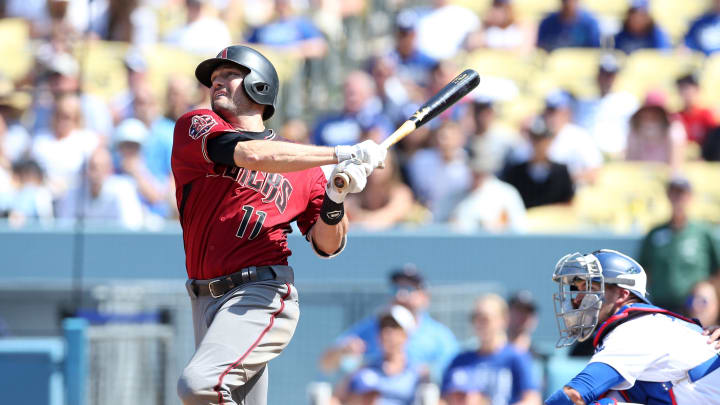The Dodgers' Signing of A.J. Pollock Might Work, But It's an Odd Choice With Bryce Harper Available

It was a little confounding, the idea that the Los Angeles Dodgers, winners of six straight NL West crowns and two straight pennants, needed an offseason makeover. Sure, Manny Machado, Brian Dozier, and Yasmani Grandal were likely departures, and Hyun-Jin Ryu and Corey Seager (among other players) were due raises. Still, though, the team has outscored its opponents by 384 runs over the past two seasons—realistically, how much better could it get with a roster shuffle?
The answer, here in the middle of January and (presumably) in the middle of that roster shuffle, remains unclear. On Thursday Los Angeles added centerfielder A.J. Pollock, the longtime Diamondback, who posted a 7.2 bWAR season in 2015 but has been injured and markedly less effective since. Pollock missed almost all of 2016 with a broken elbow, and he logged long disabled-list stints in 2017 (strained groin) and 2018 (fractured thumb). When healthy, he played above-average defense in center and hit .261/.323/.477, good for a 103 OPS+. His 2018 included a career-high 21 homers but also a career-high strikeout rate, with a career-low full-season walk rate.
VERDUCCI: How Baseball Is Becoming a "Gig Economy"
Pollock’s contract reportedly calls for four years at $13.75 million annually, with a fifth-year player option and the possibility to earn an opt-out after the third year. (For luxury-tax purposes, the deal counts just $12 million toward the Dodgers’ payroll.)
Whether he is a steal at that price depends, naturally, on his health and effectiveness going forward. There’s a way to read his offensive hiccups in 2018 as growing pains that stemmed from a new approach at the plate; there’s another way to read them, too, as the beginning of the 31-year-old’s decline phase.
For Dodger fans, though, the question of which exactly they were is a little beside the point. L.A. cut payroll before 2018 so that it could get under the luxury tax—and thereby reset the penalty rate it would be assessed—for the first time since 2012. The team succeeded. This offseason, the team dealt away Matt Kemp, Yasiel Puig, and Alex Wood, three key pieces in 2018, so that it could shed further salary. All these moves seemed to be leading toward a splashy play for free agent Bryce Harper at whatever eye-popping price he would command.
BACCELLIERI: Will the Reds' Ambitious Offseason Plan Work?
Here on Jan. 24, Harper remains available, but the Dodger outfield is now full, with Pollock in center and Joc Pederson and Cody Bellinger in the corners, plus Enrique Hernandez, Alex Verdugo, Andrew Toles, and Chris Taylor around to spot those three. While Pollock gives L.A. a necessary right-handed bat, and while he has some upside despite his recent so-so seasons, he simply doesn’t bring what Harper would. The steadiness of Pollock’s defense isn’t quite so valuable when balanced against his injury history and age, and L.A. wouldn’t have a handedness problem had it held on to Puig.
Admittedly Harper is an unusual player, even by superstar standards. He has the highest offensive ceiling under Mike Trout’s, but he is prone to slumps and is of dubious value in the field. Still, if you’re a team thinking of signing a player with an injury history who has failed to reach his 2015 heights, why not sign the 26-year-old who played 159 games last year instead of the 31-year-old who played just 113?
Payroll aside, the Dodgers are a worse 2019 team with Pollock replacing Puig, Wood, and Kemp. There may yet be trades and signings to come—will the Marlins cave on J.T. Realmuto? Will Joc Pederson man center elsewhere?—and we must remind ourselves not to grade a makeover before it is through. For now, though, the Dodgers appear to have cut payroll for business reasons. Maybe it’s a smart thing to do while trying to find buyers for a minority stake in the club, but it’s no way to tighten L.A.’s grasp on the West.
